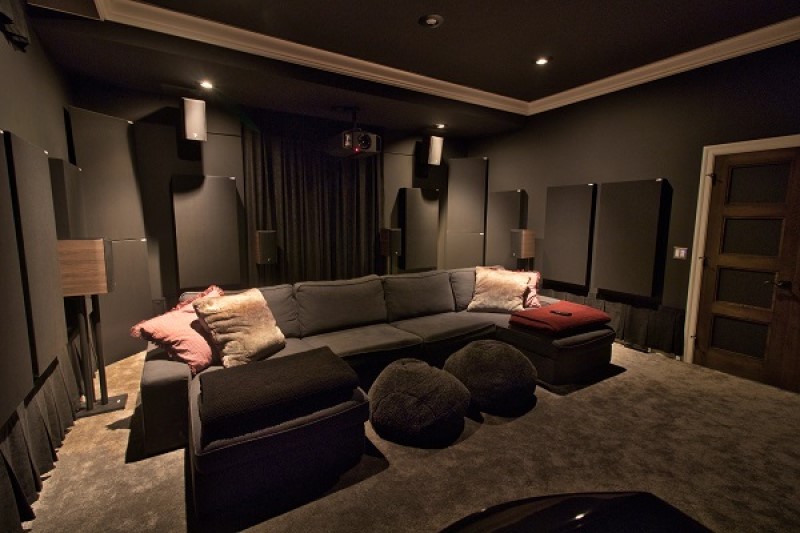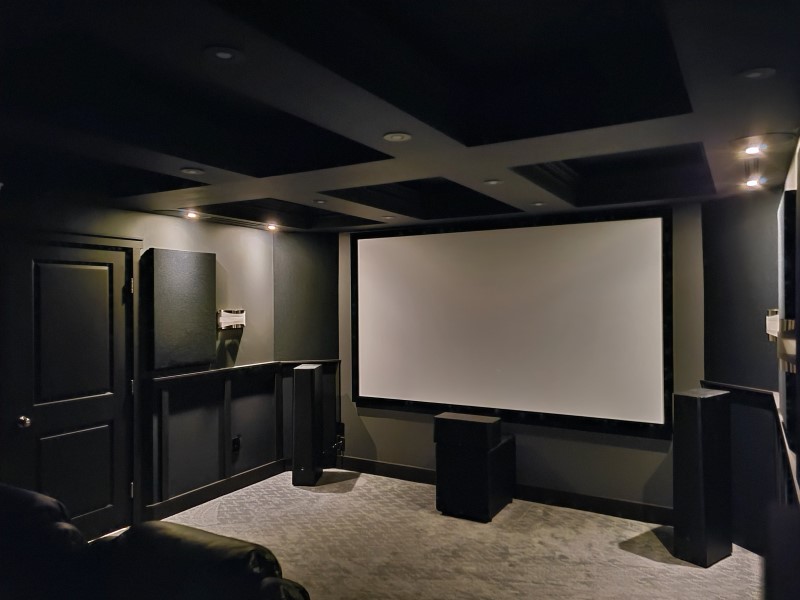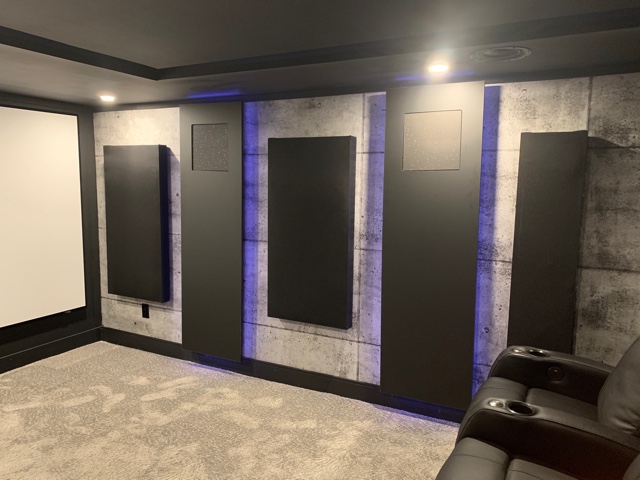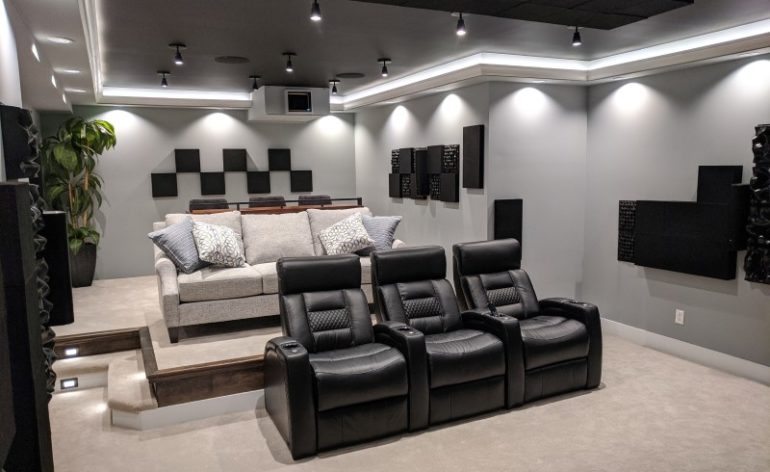Where to Place Absorptive Panels in your Home Theater
We talk a lot about treating your home theater. Adding absorptive panels can seriously transform the sound in your home theater. But that sometimes takes a lot of panels. And people can’t always afford to buy or build all their panels at once. So where should you place your absorptive panels in your home theater and in what order?
Before we begin, let’s talk about your room. Depending on your layout, you may find that some of these positions aren’t available, and others aren’t nearly as important. So, understand that these are just guidelines. All things being equal, this is how we’d place our absorptive panels in any home theater.
Location 1: First Reflection Points
The first place most people say to put an absorptive panel in a home theater is at the first reflection point. This is the point on your sidewalls where the off-axis sound bounces off the wall and reflects to your listening position. To find your first reflection points, sit in the center of your couch and have someone take a mirror and place it against the wall. Have them move it until you can see your left or right speaker (depending on the wall) in the mirror. That is your first reflection point. So, if it is your right wall, you are looking for your right speaker. Left wall, left speaker.

Location 2: Behind Your Head
Behind your head is a very important place for absorptive panels depending on the layout of your home theater. If you have a lot of room behind you, it’s pretty important. If you are sitting with a wall very close to the back of your couch, it is essential. The idea is that the sound from your center can bounce off the back wall and reflect back to your ears. Much like the first reflection point, these delayed sounds can seriously affect intelligibility. You want to have absorptive panels on the back wall so they block these reflections.
Location 3: Front Wall
Once we have the first reflection points and back wall dealt with, we like to put panels behind our main speakers. As we’ve discussed, bass wraps around our speakers. We want to catch that sound that is hitting the front wall behind your main speakers. If you can place one behind your center channel, that’s good as well. Most people can’t.
Location 4: Corners
You could make the case that corners are the single most important place for absorptive panels in your home theater. We don’t list it first because it almost exclusively affects the lowest bass coming from your subwoofers. We want to make sure that you can hear and understand all the dialogue and other content before we start worrying about the lowest bass.

There are two ways to place absorptive material in corners. You can straddle a normal rectangular panel across the corner, or you can fill the corner with absorptive material. If you are looking for an aftermarket solution for the latter, look at GiK’s Tri-Traps. These triangular bass traps fit right in the corners and do a great job. And remember, bass doesn’t care if the corner is on the walls, ceiling, or ground. Find a corner that has enough room and put a Tri-Trap there. You literally can’t have too much.
Location 5: Everywhere Else
Lastly, we like to place panels on the wall wherever it makes sense visually. We want our rooms to look as good as they sound. The other panels were placed strategically for correcting some of the worsts hotspots for reflected sound. These panels should be placed so that the room is visually pleasing to the eye.

What About the Ceiling?
There aren’t just first reflection points on the walls. There is one on the ceiling and the ground as well. Should you place an absorptive panel there as well? The answer is you could. It wouldn’t hurt. But we tend to draw the line at placing panels where it would make our guests uncomfortable. Hanging them over their heads tends to do that. Yes. we care about sound. But we also care about living in our home theaters. Absorptive panels are great and necessary, but not at the expense of home theater comfort and aesthetics.
Conclusion
We didn’t mention diffusion in this article. We’ve found that in most theaters, diffusion isn’t all that important. If you want to add some, there is nothing wrong with it. Many people like some diffusion over their heads. We haven’t found that it makes much difference if you haven’t fully treated your home theater with absorptive panels.
How about your home theater? Where did you find your absorptive panels made the most difference in your home theater?


